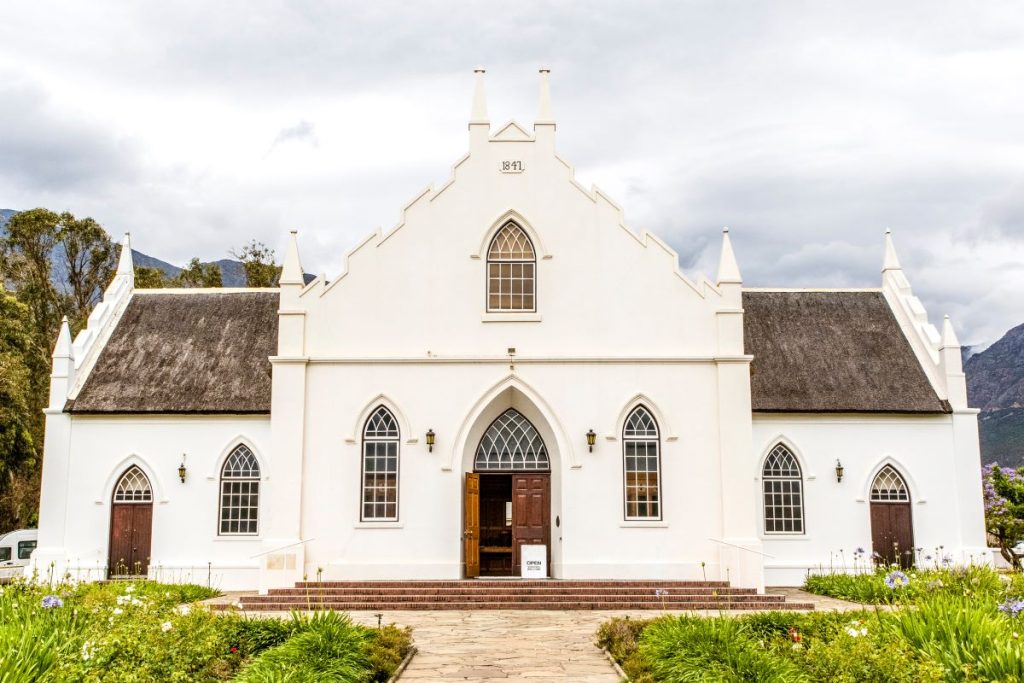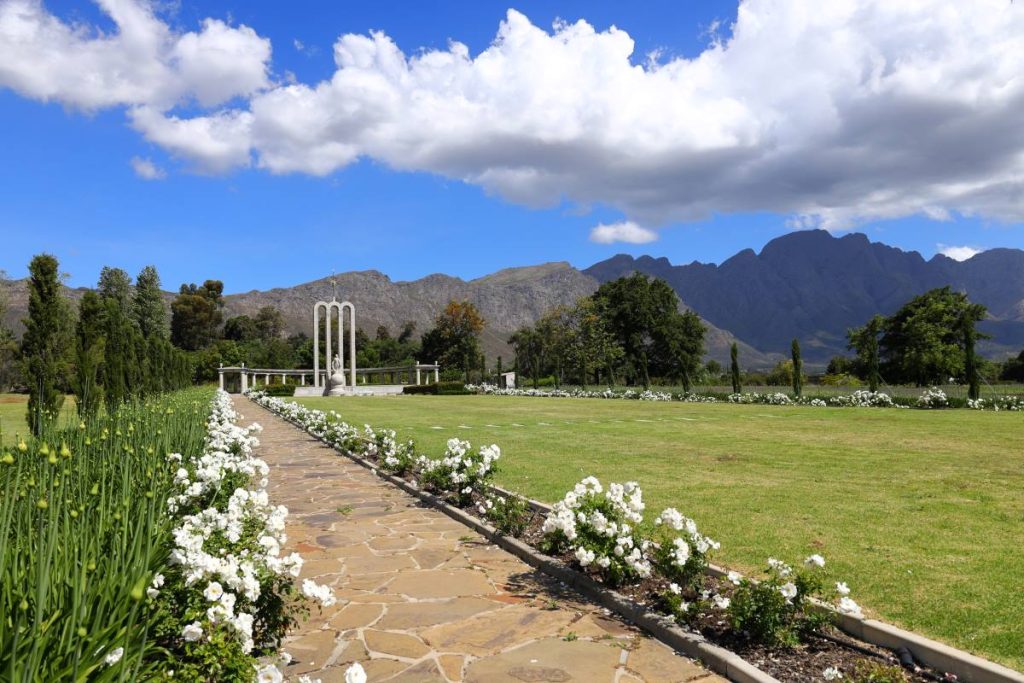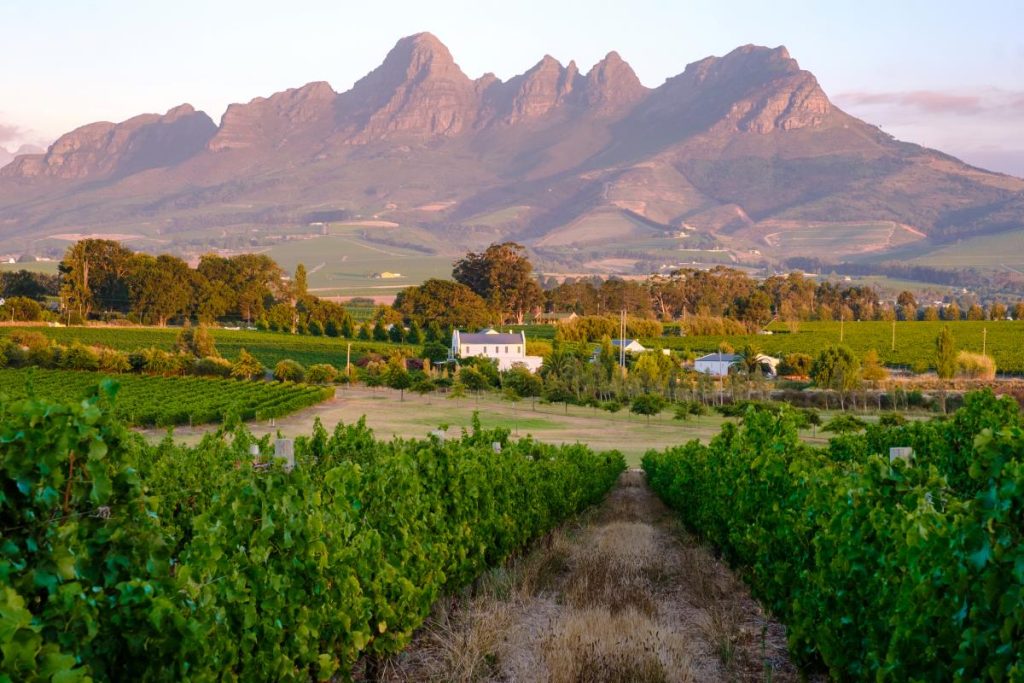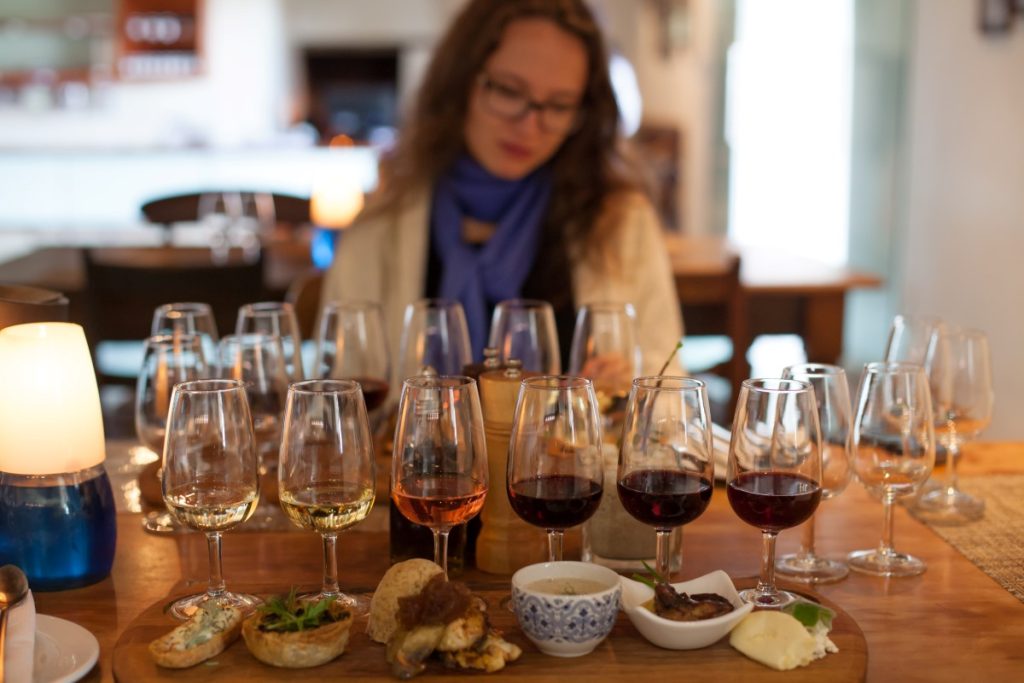Around the world, wine connoisseurs consider the Cape Winelands to be one of the foremost wine-producing regions in the world. At the heart of this region lies two famous towns, each steeped in history and viticulture: Stellenbosch and Franschhoek. While we highly recommend visiting both towns on any visit to Cape Town, some travellers might be short on time. In that case, where should you go, and why?
We’ve compiled a guide to the best reasons to visit both Stellenbosch and Franschhoek to help you make your decision. So, whether you’re in it for the wine tastings or the scenery, let’s take a look at what you can get up to in the Cape Winelands.

Photo: Getty
Wine has a long and celebrated history here in South Africa, but it all started with the arrival of Dutch colonisers. When the Dutch East India Company occupied the Cape in the 17th century, it instructed settlers to plant vineyards to produce wine for sailors, as wine was considered one way to keep scurvy at bay. When the French Huguenots arrived in what would become Franschhoek, fleeing religious persecution in France, they brought their winemaking culture and skills with them, contributing to the budding industry. Many farms in Franschhoek still bear their original French names, like La Motte, La Provence, and La Terra de Luc.
Over the following two centuries, Simon van der Stel and other prominent settlers pioneered a genuine local wine industry. In fact, is was Van der Stel who founded Groot Constantia and gave his name to Stellenbosch. However, it wasn’t until the end of the 20th century that South African wines began getting attention on the international stage.
Today, most of the grapes grown in the Western Cape end up as wine, comprising famous varieties like Chenin Blanc, Cabernet Sauvignon, and Shiraz. However, among winemakers, we’re probably best known for Pinotage, a hybrid of Pinot noir and Cinsaut. In terms of sparkling wine, local farmers produce “Methode Cap Classique” (MCC), which is made using the traditional Champagne method.

Photo: Getty
You’d be forgiven for assuming that the Cape Winelands is one continuous area, but in reality, these wine regions are spread across the southern Cape. Although you’ll find wine farms as far east as Swellendam and Plettenberg Bay, when we talk about the Cape Winelands, we’re generally referring to these areas:
These towns are either within Cape Town or just outside it, making them easily accessible to locals and tourists alike. That’s probably why Stellenbosch and Franschoek are so popular, but there’s more to it than just location.

Photo: Getty
Stellenbosch is the second oldest town in South Africa after Cape Town. Nearly four centuries of history are on display through the town’s Cape Dutch architecture, its culture, and, of course, its wine farms. Simon van der Stel founded Stellenbosch in 1679, calling it the “most charming valley” he had ever seen, and today, little has really changed. It’s still one of the most picturesque corners of the Western Cape and it’s also home to one of South Africa’s most prominent universities.
Several notable attractions include:
Of course, most visitors come here for the wine. Stellenbosch is arguably South Africa’s most famous wine destination – alongside Franschhoek – and for good reason. Not only is it the centre of winemaking research in the country, but it’s home to world-famous farms like Simonsig, Spier, and Delheim, all of which form part of the epic Stellenbosch Wine Routes. In fact, there are over 200 wine and grape producers in the Stellenbosch Wine of Origin classification area, and many of them pride themselves on offering world-class wine tastings and tours.
If you’re just popping into Stellenbosch for the day, you might want to spend the whole day at Spier Wine Farm. Not only is it one of the most celebrated wine farms in South Africa, but it also has top-class restaurants, walking trails, a vineyard Segway tour, and a craft market. You can also stay at the Spier Hotel and wind down with some treatments at the spa.

Photo: Getty
“Franschhoek” means “The French Corner” and is named for the French Huguenot settlers who founded the town in the late 17th century. Over 300 years haven’t stripped the town of its French charm, and today, it’s still one of the few places in South Africa that actively celebrates and promotes French culture. It’s just under 30 minutes away from Stellenbosch and actually falls within the greater Stellenbosch Municipality. In fact, this entire area is filled with wine farms, making it a central hub in the Cape Winelands.
Franschhoek, like Stellenbosch, boasts some remarkable colonial architecture, but in recent years, it’s become a hotspot for innovation that spans both design and the culinary arts. Some notable attractions include:
When it comes to wine, the Franschhoek Wine Tram is a must. It’s simply the best way to explore Franschhoek, giving you the opportunity to spend an entire day sampling wines from across the valley. The hop-on hop-off format gives you the flexibility to take a lunch break or spend as long as you want at a particular farm. That’s especially useful, because some farms along the route have their own museums, restaurants, and activities.
Franschhoek really leaves us spoilt for choice. However, if you want an all-round day trip experience that covers wine, food, and fun, you need to spend the day at Babylonstoren. It’s one of the oldest working farms in the Cape Winelands, and in recent years, it’s become a hub of luxury accommodation, fine dining, and world-class wine. Babylonstoren’s spectacular garden is probably its most famous feature, with areas dedicated to fruit, flowers, spices, and even rare species.
Although it’s not in central Franschhoek, it encompasses everything that makes the French Corner one of the Western Cape’s most popular tourism destinations.

Photo: Getty
If you take anything from this article, perhaps it should be that whether you choose Stellenbosch, Franschhoek, or both, you’re in for an incredible time in the Cape Winelands. Even if wine isn’t your thing, you’ll find plenty to do and see, from classy art galleries to some of the most spectacular gardens in South Africa.
These iconic towns are two examples of why Cape Town is one of the very best self-drive destinations in the world. If you hire a car in the city, Stellenbosch and Franschhoek are just a short drive away. As a matter of fact, why stop at the gateway to the Cape Winelands? There’s so much more to see in the Western Cape.
You might also like: 10 Fun Things to Do in Cape Town Under R200